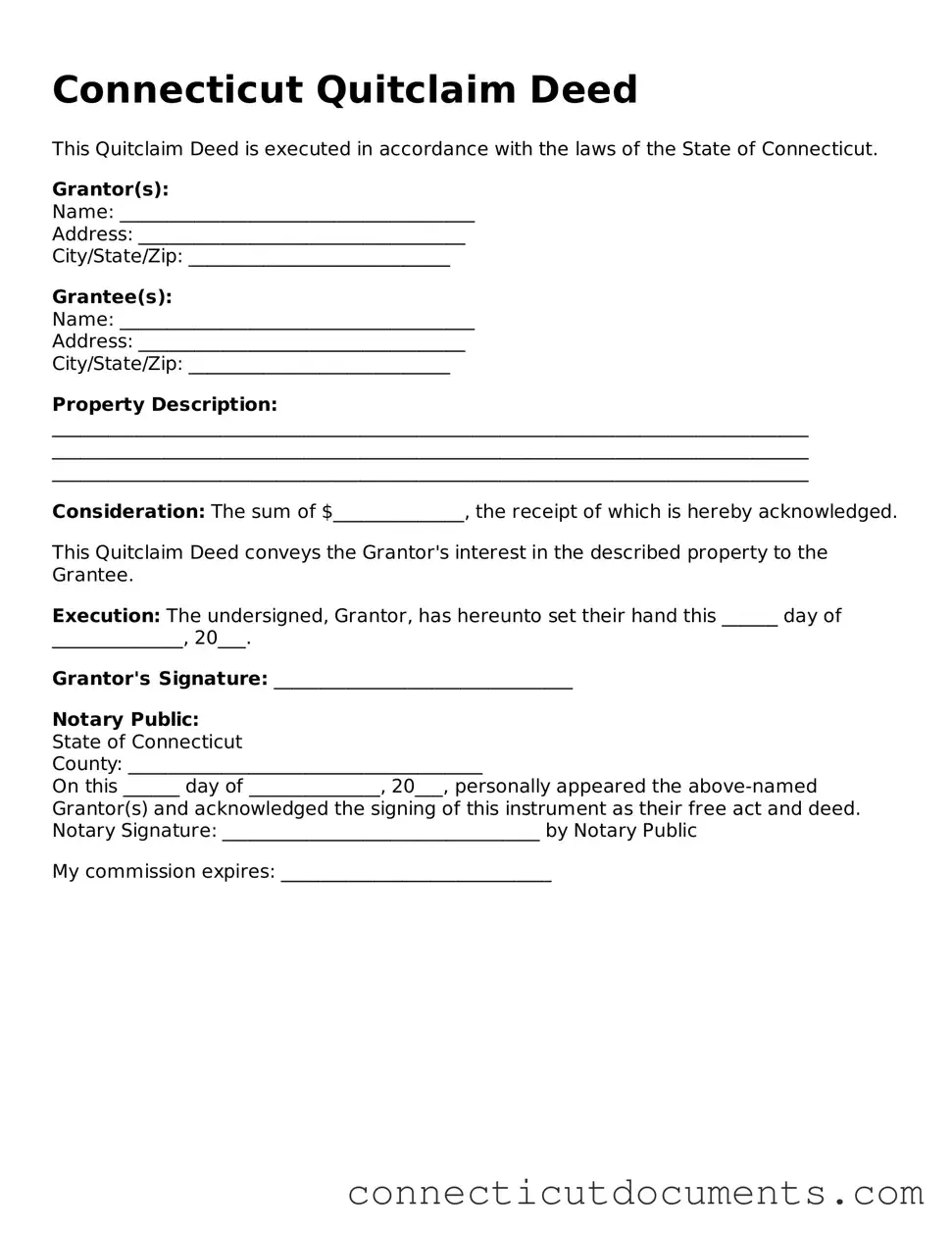What is a Quitclaim Deed in Connecticut?
A Quitclaim Deed is a legal document used to transfer ownership of real estate from one party to another without making any guarantees about the property title. This means the seller, or grantor, relinquishes any claim they may have to the property, but does not assure that the title is clear or free of liens. It is often used between family members or in situations where the parties know each other well.
When should I use a Quitclaim Deed?
This type of deed is commonly used in situations such as transferring property between family members, adding or removing a spouse from the title after marriage or divorce, or when a property is gifted. It is not typically recommended for sales involving unknown buyers or sellers, as it does not provide the buyer with any protection against title issues.
What information is required on a Connecticut Quitclaim Deed?
A Quitclaim Deed in Connecticut must include the names of the grantor and grantee, a description of the property, the date of the transfer, and the signature of the grantor. Additionally, it should state the consideration, or payment, for the transfer, even if that amount is nominal or zero.
Is a Quitclaim Deed the same as a Warranty Deed?
No, a Quitclaim Deed is not the same as a Warranty Deed. A Warranty Deed provides a guarantee that the grantor holds clear title to the property and has the right to transfer it. In contrast, a Quitclaim Deed offers no such assurances, making it a riskier option for buyers who want to ensure they are receiving a clear title.
Do I need to have the Quitclaim Deed notarized?
Yes, in Connecticut, a Quitclaim Deed must be signed in the presence of a notary public. This notarization helps verify the identity of the grantor and confirms that the signing was done voluntarily. It is also a requirement for the deed to be recorded with the town clerk.
How do I record a Quitclaim Deed in Connecticut?
To record a Quitclaim Deed, you must take the signed and notarized document to the town clerk's office in the municipality where the property is located. There may be a recording fee, and it is important to ensure that the deed is properly formatted and includes all necessary information to avoid any delays in recording.
What are the tax implications of using a Quitclaim Deed?
In Connecticut, transferring property using a Quitclaim Deed may trigger a conveyance tax. This tax is typically based on the sale price or the fair market value of the property. However, certain exemptions may apply, particularly for transfers between family members. It is advisable to consult with a tax professional to understand any potential tax liabilities.
Can I revoke a Quitclaim Deed after it has been executed?
Once a Quitclaim Deed has been executed and recorded, it generally cannot be revoked. The transfer of ownership is considered final. If there are concerns about the transfer, it may be necessary to pursue legal avenues to challenge the deed, which can be complex and may require legal assistance.
Where can I obtain a Quitclaim Deed form in Connecticut?
Quitclaim Deed forms can often be obtained from local town clerk's offices, legal stationery stores, or online legal document services. It is important to ensure that the form complies with Connecticut state laws and includes all required information for it to be valid.
